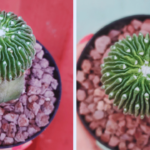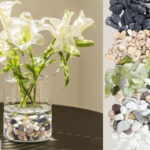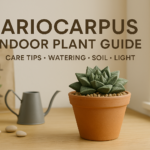How To Grow Albuca Spiral Grass Plants? Albuca is an arresting, bulbous flower that is native to South Africa. The plant is perennial, but it should be treated as an annual or dug up and overwintered indoors in many North American zones. Caring for Albuca isn’t difficult provided the plant is in the correct site where soil drains well, is fertile, and average moisture is available. Growing Albuca is most challenging due to rotting bulbs caused by excess moisture and frost. So, read on to learn how to grow and care for this unique and beautiful plant.
What is an Albuca Spiralis?
Albuca spiralis, known as the Frizzle Sizzle or Corkscrew Albuca, is a species of flowering plant in the family Asparagaceae. It is native to the Western and Northern Cape Provinces in South Africa. The plant has narrow leaves that grow in a spiral formation, giving it a unique and distinctive appearance. Despite having glandular hairs on the tips, the leaves of Albuca viscosa are not sticky.
The best way to care for Albuca spiralis is to place it in a location with bright, indirect light and plant it in loose, well-draining soil mix. Water the plant about once per week during the growing season, allowing the soil to dry out between waterings. The plant should be fed once a month in fall and winter.A dormant period occurs during winter when Albuca spiralis should be reduced in watering and moved to a cooler location.
The plant belongs to the Asparagaceae family, not the Poaceae.
| Common Name | Frizzle sizzle |
| Botanical Name | Albuca spiralis |
| Family | Asparagaceae |
| Plant Type | Bulb, succulent |
| Mature Size | 8 in. tall |
| Sun Exposure | Full, Part |
| Soil Type | Moist, but well-drained |
| Soil pH | Neutral |
| Bloom Time | Winter |
| Flower Color | Yellow |
| Hardiness Zones | 9-11 (USDA) |
| Native Area | Africa |
How To Grow And Care For Albuca ‘Frizzle Sizzle’?
You need to be familiar with the growing region and conditions of Frizzle Sizzle before caring for it. Frizzles can even produce quirky, dangling flowers that will brighten up your room. The bulb’s unique eye appeal needs a cooling period to grow healthy foliage and flowers. The plants thrive best under bright sunlight, so it can be challenging to grow them indoors. Albuca spiralis needs 12 weeks to fully grow after you have placed it in the right environment.
Light Requirements
For the optimal growth of Albuca spiral grass plants, it is important to provide them with enough light. These plants thrive in full sun conditions and need at least 6-8 hours of direct sunlight each day. Provide plenty of sunlight for the plant. In some cases, you may need to supplement natural light with a grow light. Adequate light is crucial for the development of the spiral leaves.
How often to water frizzle sizzle?
Frizzle Sizzle plants (Albuca spiralis) have specific water requirements that vary depending on the season. During the plant’s active growing season (spring to early fall), it is important to water it when the top inch of soil feels dry. However, it is crucial to allow the excess water to drain completely to prevent the bulb from rotting. It is recommended to water the Frizzle Sizzle plant once every 2 or 3 weeks during this period or when the soil is completely dry.
During the dormancy period in winter, the watering frequency should be reduced. Only water the plant every 3 to 4 weeks, ensuring that the soil has ample time to dry out between waterings1. Overwatering during this period can cause issues for the plant, so it is important to keep the soil on the drier side.
Ideal Soil Conditions
When it comes to growing Albuca spiral grass plants, one of the key factors for their success is providing ideal soil conditions. These plants thrive in well-draining soil that is mixed with coarse sand or mineral grit. A sandy soil mix or cactus mix is perfect for these plants, ensuring proper drainage and preventing waterlogging. It’s important to use a pot with drainage holes to allow excess water to escape. Plants should be hydrated in soil with enough water retention, but not too wet. Root rot can occur when soils hold too much moisture. By providing the right soil conditions, you can ensure the health and vitality of your Albuca spiral grass plants.
Fertilizer Guidelines
Feed your Albuca spiral grass plants with a balanced liquid fertilizer during their active growing season. Be sure to follow the manufacturer’s instructions for the proper dosage and frequency. Opt for a fertilizer formulated for succulent plants to ensure the best results. When applying the liquid feed, target the soil around the base of the plant. Remember not to over fertilize, as this can lead to excessive leaf growth and weak stems. Following these fertilizer guidelines will provide your Albuca spiral grass plants with the nutrients they need to thrive.
Temperature & Humidity
Albuca spiral grass plants thrive in moderate temperatures ranging from 65 to 75 degrees Fahrenheit, although they can tolerate cooler temperatures down to 50 degrees Fahrenheit. It is important to avoid exposing these plants to freezing temperatures as it can damage both the leaves and bulbs. It is best to omit humidity, they prefer low to moderate levels. Adequate airflow around the plant is also crucial to prevent fungal growth. It is very important to maintain the right temperature and humidity conditions for your Albuca spiral grass plants to grow.
How to Repot Frizzle Sizzle?
Plants should be repotted every two to three years or as soon as they outgrow their current pot. Here are the steps to repot a Frizzle Sizzle plant:
- Select a new pot that is larger than the current pot. Ensure that the new pot has drainage holes, as Frizzle Sizzle plants prefer to avoid sitting in waterlogged soil.
- Fill the bottom of the new pot with a layer of well-draining soil mix.
- Remove the Frizzle Sizzle plant from its current pot, being careful not to damage the roots. You can loosen any tangled roots if necessary.
- Place the plant in the new pot, ensuring that the top of the roots is level with the soil surface. Add extra soil mix around the roots, pressing down to remove any air pockets.
- Water the plant and let it drain. Please place it in a bright, indirect light until it has acclimated to its new home.
How to Propagate Albuca Frizzle Sizzle?
To propagate Albuca Frizzle Sizzle plants, there are a few methods you can try. One common method is propagation through offsets or “pups” that develop around the base of the parent plant. Here’s a step-by-step guide to propagating Frizzle Sizzle plants through offsets:
- Prepare a new pot and well-draining potting mix.
- Remove the offsets from the parent plant by loosening the soil around the base and separating them.
- Place the offsets in the new pot with fresh potting mix, making sure to plant them at the same depth as they were in the parent plant.
- Water the planted offsets to settle the soil around their roots.
- Place the pot in a location with bright, indirect light and maintain a moderate temperature between 60 and 75 degrees Fahrenheit.
- Keep the soil moist but not wet, watering when the top inch of soil feels dry.
Another method of propagating Frizzle Sizzle plants is through seeds. Here are the steps for propagating Frizzle Sizzle plants from seeds:
- Collect mature seeds from the Frizzle Sizzle plant during the growing season.
- Fill a tray with well-draining soil and sprinkle the seeds on top of the soil.
- Press the seeds into the soil, but do not bury them too deep.
- Place the tray in a warm and bright location, with temperatures around 70 degrees Fahrenheit.
- Keep the soil moist but not soaking wet by misting or covering the tray with a plastic dome to create a humid environment.
- Germination can take several weeks, so be patient and continue to provide proper care to the seedlings as they grow.
Addressing Growing Problems
To ensure optimal growth of your Albuca Spiral Grass plants, it’s essential to address common growing problems. Start by using a potting mix with good water retention to provide enough moisture for the plant. Adequate airflow is crucial to prevent disease issues, so make sure there’s proper ventilation around the plant. Trim any brown or dry tips on the leaves for a healthier appearance. Adjust the watering schedule according to the seasons for optimal growth. Ensure proper drainage to avoid basal collapse. By addressing these growing problems, you can ensure your Albuca Spiral Grass plants thrive and flourish.
Dealing with Pests and Diseases
Frizzle Sizzle plants, also known as Albuca Spiralis, can be prone to pests and diseases. Some common pests that can affect Frizzle Sizzle plants include spider mites and mealybugs. These pests can infest the plants and cause damage, leading to issues such as leaves falling over.
To address pest infestations, you can use insecticides formulated for indoor plants or remove the pests using a cotton swab dipped in rubbing alcoho. Regularly inspect your Frizzle Sizzle plants for any signs of pest activity and take appropriate action if necessary.
Also to pests, Frizzle Sizzle plants can also be susceptible to root rot, which is a fungal disease. The soil should be well drained to prevent root rot. Overwatering or poor drainage can cause the plants to become rotted. Symptoms of root rot include yellowing leaves, wilting, and brown or black roots.
It’s important to plant plants in well-draining soil to prevent root rot. Allow the soil to dry out between waterings and avoid keeping the plants in waterlogged conditions.
Proper care and maintenance are key to keeping Frizzle Sizzle plants healthy and avoiding pest and disease problems. This includes providing adequate light, maintaining appropriate watering practices, and inspecting the plants for any signs of pests or diseases.
The information and general knowledge on Frizzle Sizzle plants provided are the basis of this response. For more specific and comprehensive information, it’s always a good idea to consult many reliable sources and seek advice from plant experts or local nurseries.
You can see more about Common Pests & Diseases Treatment for Succulents
How to Encourage Blooms in Your Albuca Spiral Grass?
Albuca Spiral Grass, with its unique twisted foliage, can add a touch of whimsy to any garden. However, many gardeners find themselves disappointed when their Albuca fails to produce blooms. If you’re longing for those delicate yellow flowers to grace your garden, fear not! With a few simple tips and tricks, you can encourage your Albuca to burst into bloom and become the star of your outdoor space.
First, ensure that your Albuca Spiral Grass is receiving adequate sunlight. These plants thrive in bright light conditions and need at least six hours of direct sunlight daily. Without enough light exposure, the chances of your Albuca producing blooms diminish.
Another important factor to consider is the temperature. While these plants are hardy in warmer climates, they also must have a period of cooler temperatures to start flowering. To simulate this natural cycle, bring your potted Albuca indoors during the winter months or provide them with some shelter if planted outside. This shift in temperature will signal to the plant that it’s time to start blooming.
Lastly, make sure you’re providing proper care and regular fertilization for your Albuca Spiral Grass. Use a balanced fertilizer formulated for flowering plants during the growing season to promote healthy growth and encourage blooming.
Varieties of Albuca Spiral Grass and Similar Plants
Explore various types of the Albuca genus, including Albuca spiralis or Albuca frizzle sizzle. You can also consider growing similar plants like the Helicopter plant or Corkscrew Albuca. Take the time to research South African plants known for their unique spiral leaves. Experimenting with different varieties will help you find the perfect addition to your collection. Additionally, you can discover other succulent plants that offer interesting growth patterns. There are plenty of options to choose from when it comes to expanding your plant collection.
Why is my Frizzie Sizzle not curling?
Frizzle Sizzle plants (Albuca spiralis) are not related to hair and do not have the ability to curl like hair does. The term “Frizzle Sizzle” refers to the unique spiral shape of the plant’s leaves, not its ability to curl or straighten. The leaves grow in a twisted, spiral pattern, giving the plant its distinctive appearance.
If you have concerns about the appearance of your Frizzle Sizzle plant leaves, there may be other factors affecting its growth or health. It could be helpful to check the plant’s care, such as light, temperature, watering, and soil conditions to ensure it is receiving proper care. If you observe any signs of distress, such as yellowing or wilting leaves, it could or show issues with watering, lighting, or pests.
It’s also worth noting that the growth and appearance of Frizzle Sizzle plants can vary based on individual specimens and environmental conditions. Some plants may exhibit more pronounced spiral growth than others. If you have specific concerns or observations about your Frizzle Sizzle plant, please provide more information, and I will do my best to assist you.
Frequently Asked Questions
How do you grow Albuca Spiralis?
Albuca Spiralis, a bulbous plant native to South Africa, thrives in well-draining soil and prefers full sun to partial shade. Water , allowing the soil to dry out between waterings. Propagate through bulb division or planting seeds in spring.
How do you grow frizzle sizzle from seed?
To grow frizzle sizzle from seed, sow them in well-draining soil, covering them. Keep the soil moist and maintain a temperature of around 70°F. Germination can take up to 6 weeks, so be patient. Acclimate seedlings to brighter light and lower humidity after they emerge.
Is Albuca Spiralis indoor or outdoor plant?
Albuca spiralis can thrive both indoors and outdoors. It is a versatile plant that adapts well to various conditions. Indoors, it prefers bright, indirect sunlight and well-draining soil. Outdoors it can tolerate full sun to partial shade but needs protection from frost.
How to Make Frizzle Sizzle Bloom?
Getting a Frizzle Sizzle plant to bloom requires mimicking its natural growing conditions. Frizzle Sizzle plants bloom in their natural habitat during the fall/winter, with flowers appearing on long stalks. This plant can reach a height of 12 to 24 inches and have about 10 to 20 blooms per spike.
How do you propagate Frizzle sizzle?
There are two ways to propagate Frizzle sizzle, also called Albuca spiralis. To propagate using bulbs, separate the offsets from the parent plant and plant them in well-draining soil. For seed propagation, sow in a moist seed tray filled with potting soil. Provide bright indirect light and well-draining soil for optimal growth.
Is Albuca Spiralis indoor or outdoor plant?
Albuca Spiralis can be grown both indoors and outdoors. Indoors, it thrives in bright indirect sunlight and well-draining soil. Outdoors, it prefers partial to full sun exposure and loamy or sandy soil. Protect the plant from frost if grown outdoors.
Is spiral aloe hard to grow?
Growing a spiral aloe can be more challenging compared to the Albuca spiral grass plants. Spiral aloes need specific conditions like well-draining soil, full sun exposure, and minimal watering. Albuca spiral grass plants, so, prefer well-drained soil, partial shade, and regular watering. Proper care and attention are vital for the growth and survival of both plants.
Why is My Albuca Spiral Grass Not Curling?
If your Albuca Spiral Grass isn’t curling, there are a few factors to consider. First, check the amount of direct sunlight it’s receiving. Also, check if the plant is in its dormancy period. Adjust watering frequency to avoid over or under watering. Proper care and fertilization are essential too. If needed, consult a plant expert for further guidance.
Why is my Frizzle drooping?
Frizzle Sizzles droop mainly because they lack water. The plant is less drought-tolerant than other succulents, even though it is considered a succulent. The Water Requirements above can help you avoid or resolve this issue.
Conclusion
Growing and caring for Albuca Spiral Grass plants can be a rewarding experience. Plants thrive when they receive the right water, light, soil conditions, and fertilizer. Regular pruning, repotting, and propagation are also essential for maintaining healthy plants. If you encounter any issues with your Albuca Spiral Grass, such as growing problems or pests and diseases, it’s important to address them. Your plants will bloom if you provide them with ideal temperatures and humidity conditions. Lastly, there are various varieties of Albuca Spiral Grass and similar plants that you can explore to expand your collection. Happy gardening!
You may also like Variegated Rhaphidophora Tetrasperma









